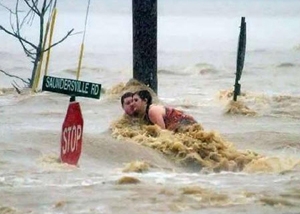Nation’s Newest Environmental Satellite Successfully Launched
NPP is vital for NOAA’s weather forecast mission
America’s newest polar-orbiting satellite roared into orbit this morning, setting the stage for enhanced weather data NOAA scientists will use to develop life-saving severe weather forecasts days in advance.
The NPOESS Preparatory Project (NPP) satellite was launched from Vandenberg Air Force, Calif., at 2:48 a.m. PDT aboard a United Launch Alliance Delta II rocket. At approximately 3:45 a.m. PDT, the spacecraft separated from the Delta II to the delight of NOAA and NASA officials.
NPP is a NASA Earth-observing satellite and features five new instruments that will collect more detailed information about Earth’s atmosphere, land and oceans. NASA will use NPP as a research mission, while NOAA will use the data for short and long-term weather forecasting and environmental monitoring.
“This year has been one for the record books for severe weather,” said Dr. Jane Lubchenco, under secretary of commerce for oceans and atmosphere and NOAA administrator. “The need for improved data from NPP and the next generation satellite system under development by NASA and NOAA has never been greater. They will enhance our ability to alert the public with as much lead time as possible.”
In 2011, data from polar-orbiting satellites like NPP allowed emergency managers and communities to prepare for severe weather events . Five days before a destructive and deadly tornado outbreak in Alabama and parts of the Southeast in April, NOAA forecasters were able to see the early atmospheric signs of the storm system developing and issue timely warnings. NOAA full release











